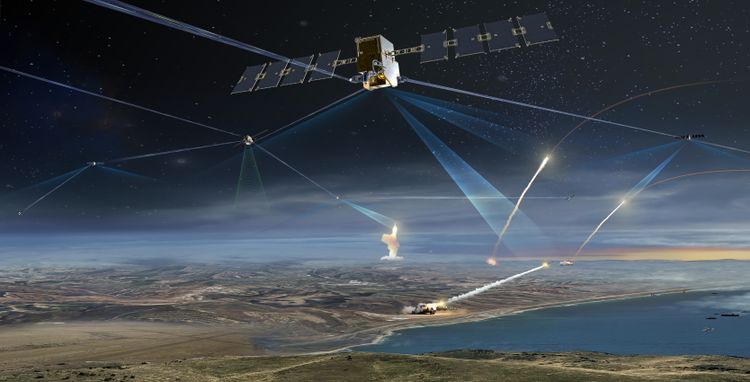The Space Development Agency (SDA) awarded two prototype agreements with a potential value of more than $1.3 billion for the establishment of the Tranche 1 Tracking Layer, which aims to provide global indications, warning, tracking, and targeting of advanced missile threats, including hypersonic missile systems. The projects will provide the initial missile warning/missile tracking of the National Defense Space Architecture (NDSA). The satellites are expected to launch in April 2025.

T1TRK will detect, identify, and track hypersonic weapons and other advanced missiles from their earliest stages of launch through interception. Courtesy of Northrop Grumman.
Agreements were awarded to teams led by L3Harris Technologies — with a potential value of $700 million — and Northrop Grumman Strategic Space Systems — with a potential value of $617 million — to each build a space segment consisting of two planes with seven space vehicles per plane. This consists of 14 satellites from each performer for a total of 28 satellites in four planes, which serve to collect infrared data and provide network communications. The satellite constellations will be equipped with optical communications terminals, infrared mission payloads, Ka-band communications payloads, and multiple pointing modes to enable the identification and tracking of the fastest missiles currently known.
Both companies have done previous work with the SDA. L3Harris developed four prototype satellites under the SDA’s Tracking Layer Tranche 0 award in 2020. The four space vehicles produced under the $193 million firm fixed-price contract will launch in 2023.
Earlier this year Northrop Grumman was contracted to produce a constellation of low-Earth orbit satellites for the Tranche 1 Transport Layer mesh satellite communications network to provide resilient, low-latency, high-volume data transport for U.S. military operations around the world.
The Tranche 1 Tracking Layer satellites will be flown out of SDA’s Operations and Integration Centers at Grand Forks Air Force Base, N.D., and Redstone Arsenal, Ala.
*This article has been updated for clarity.